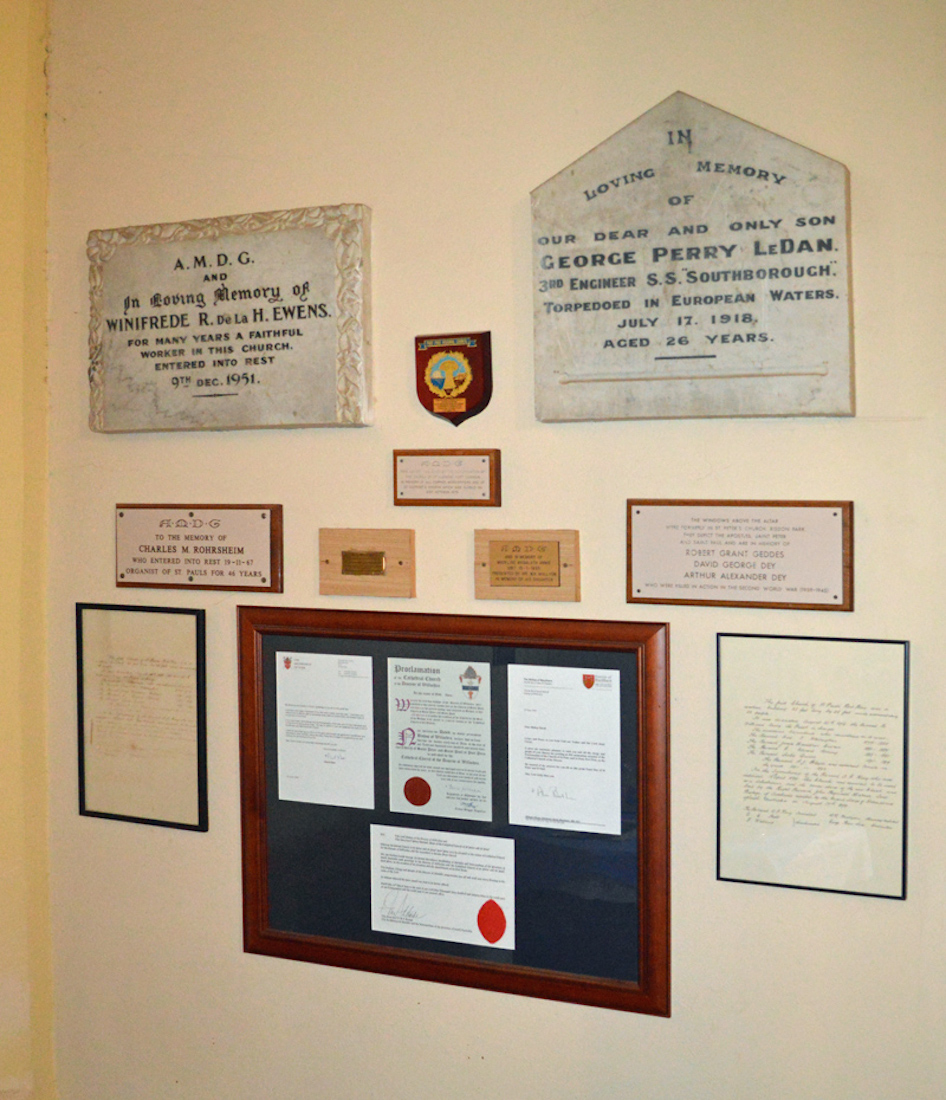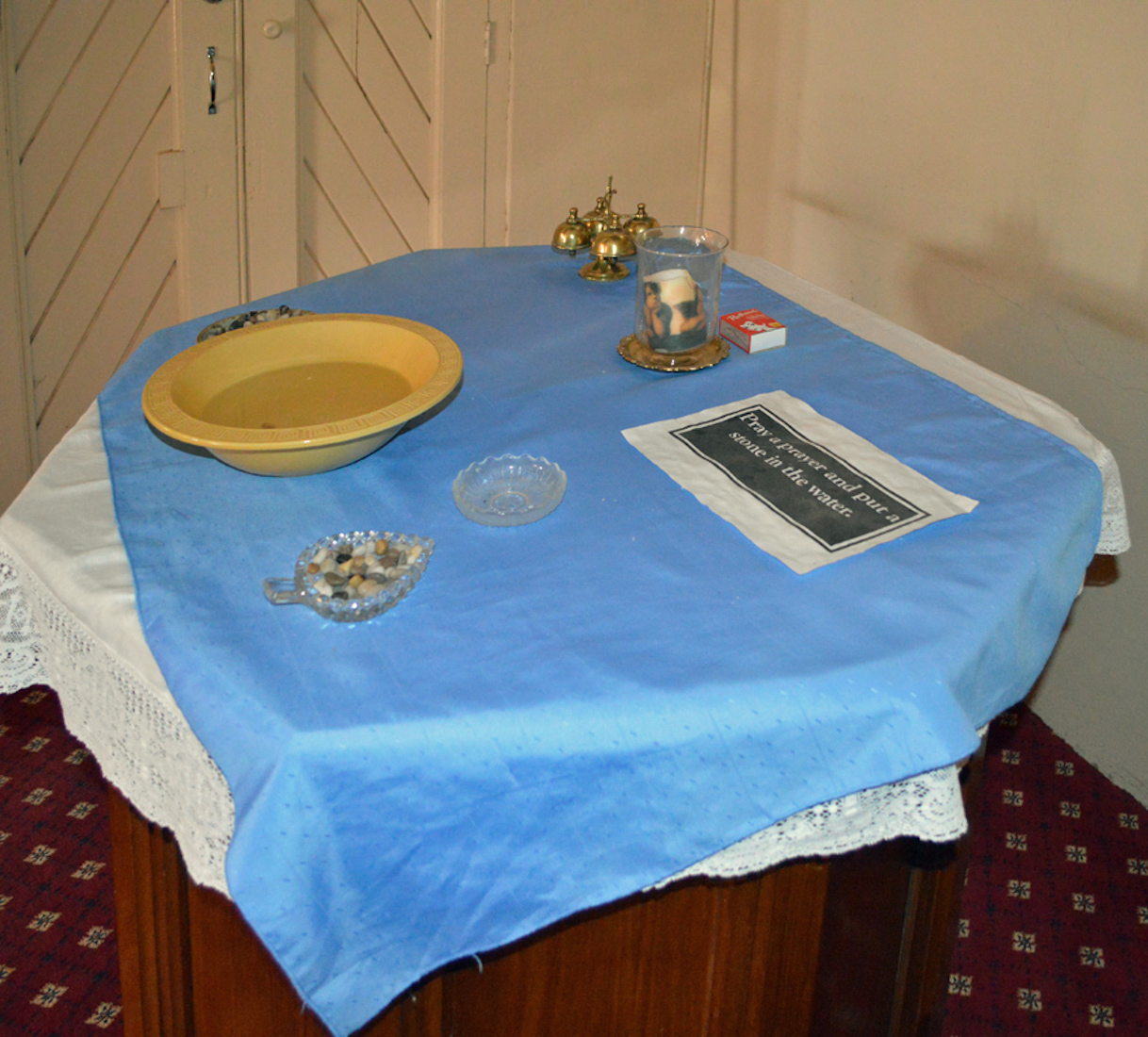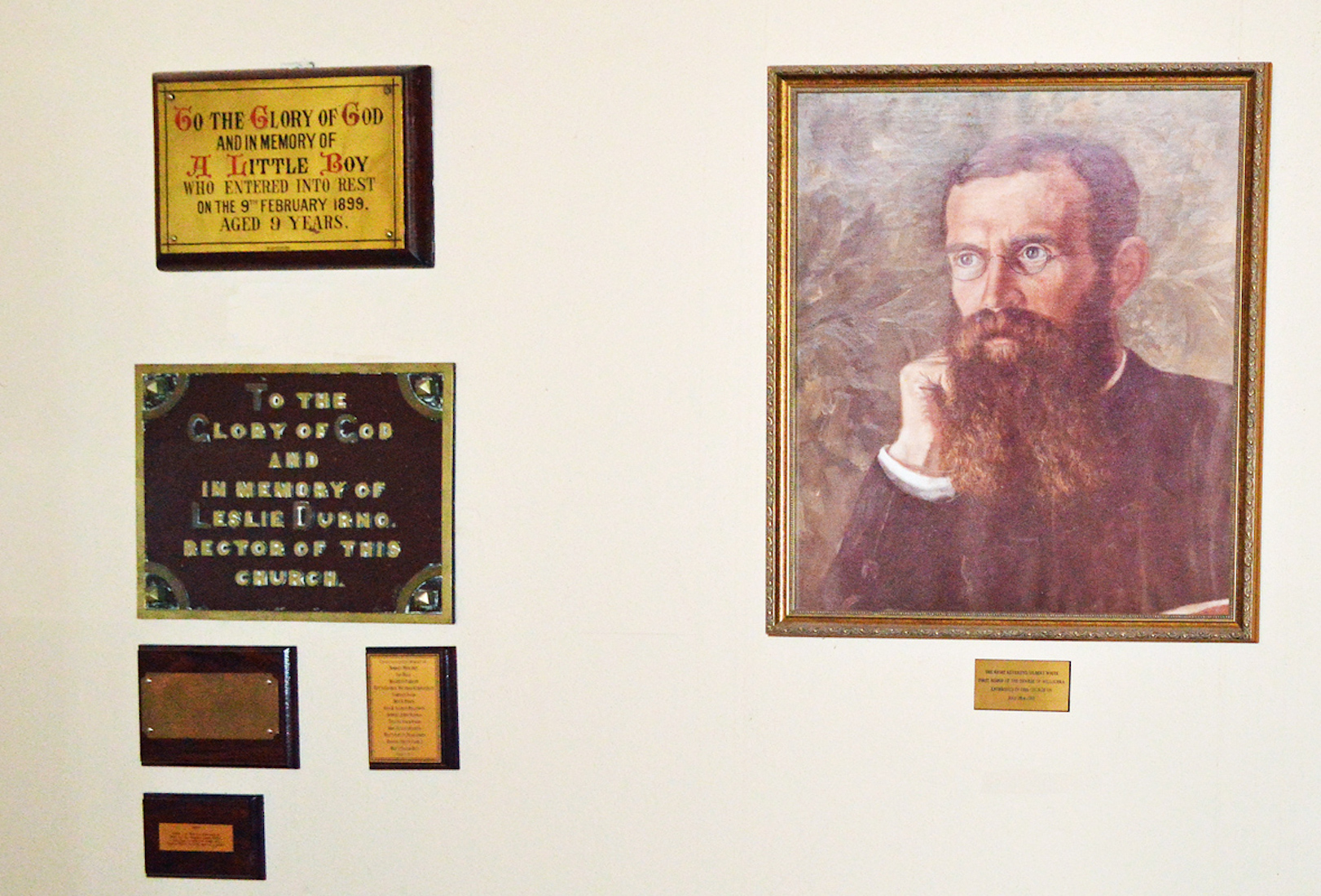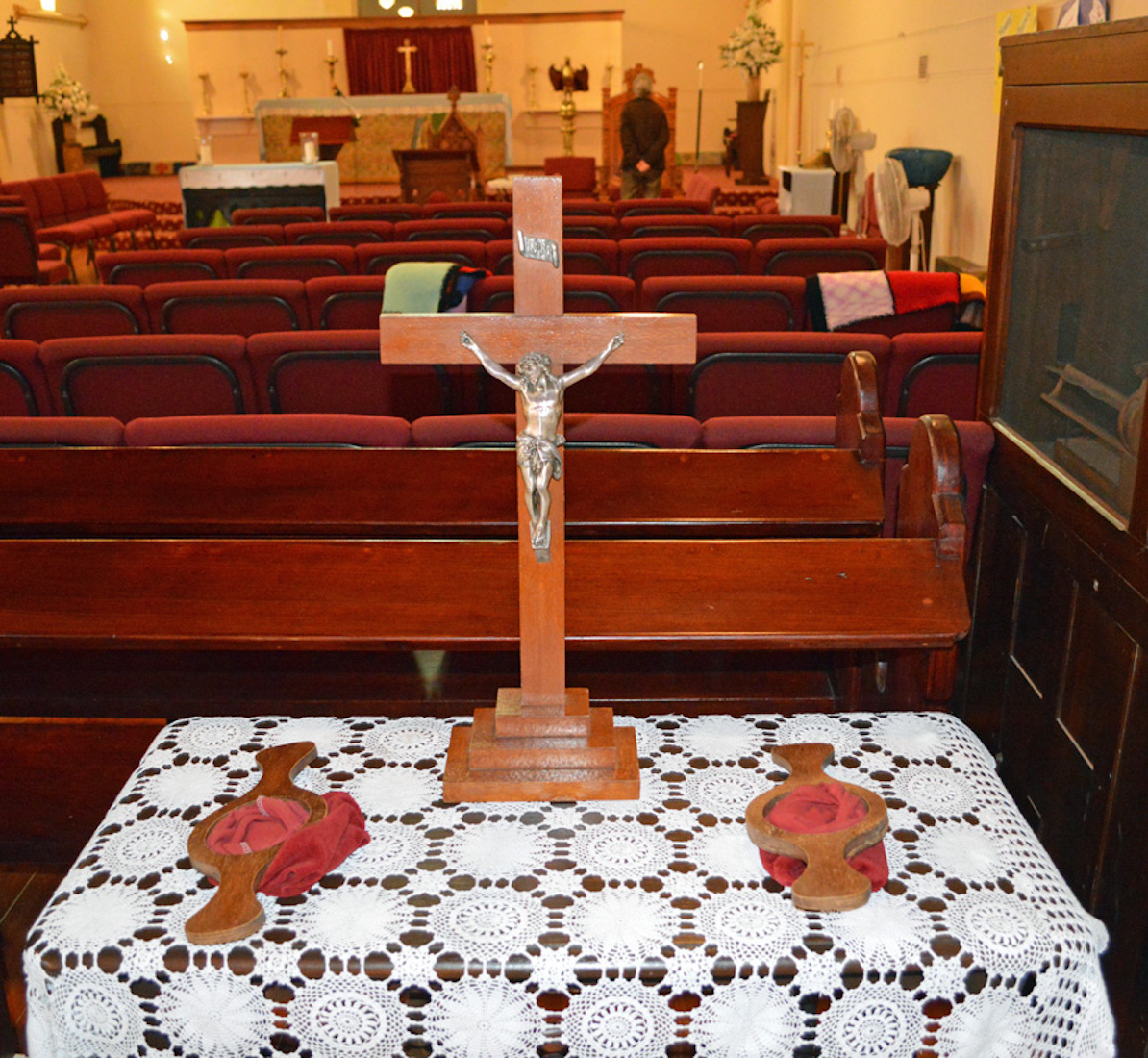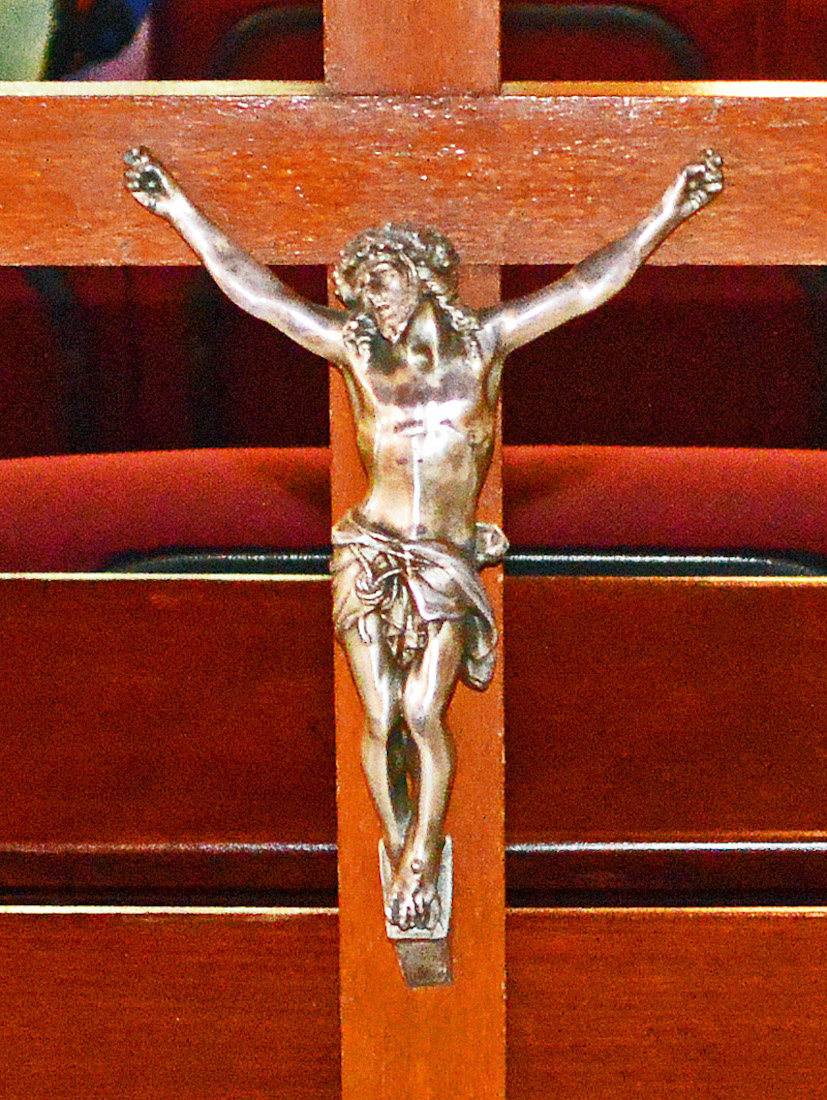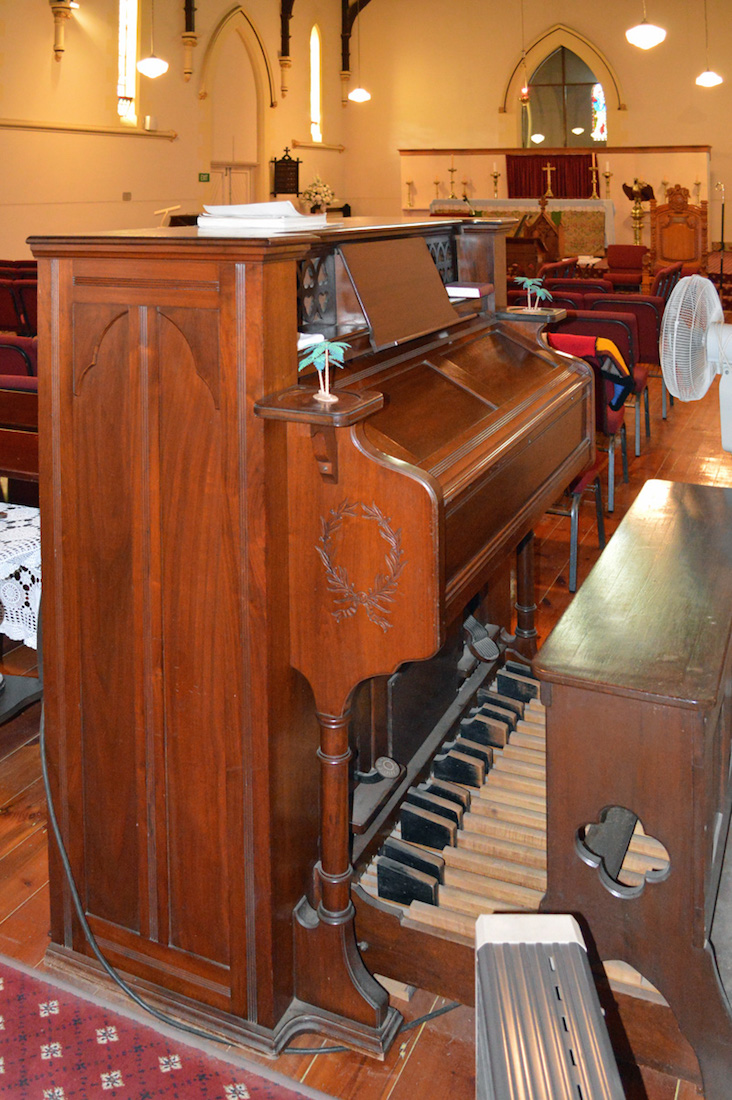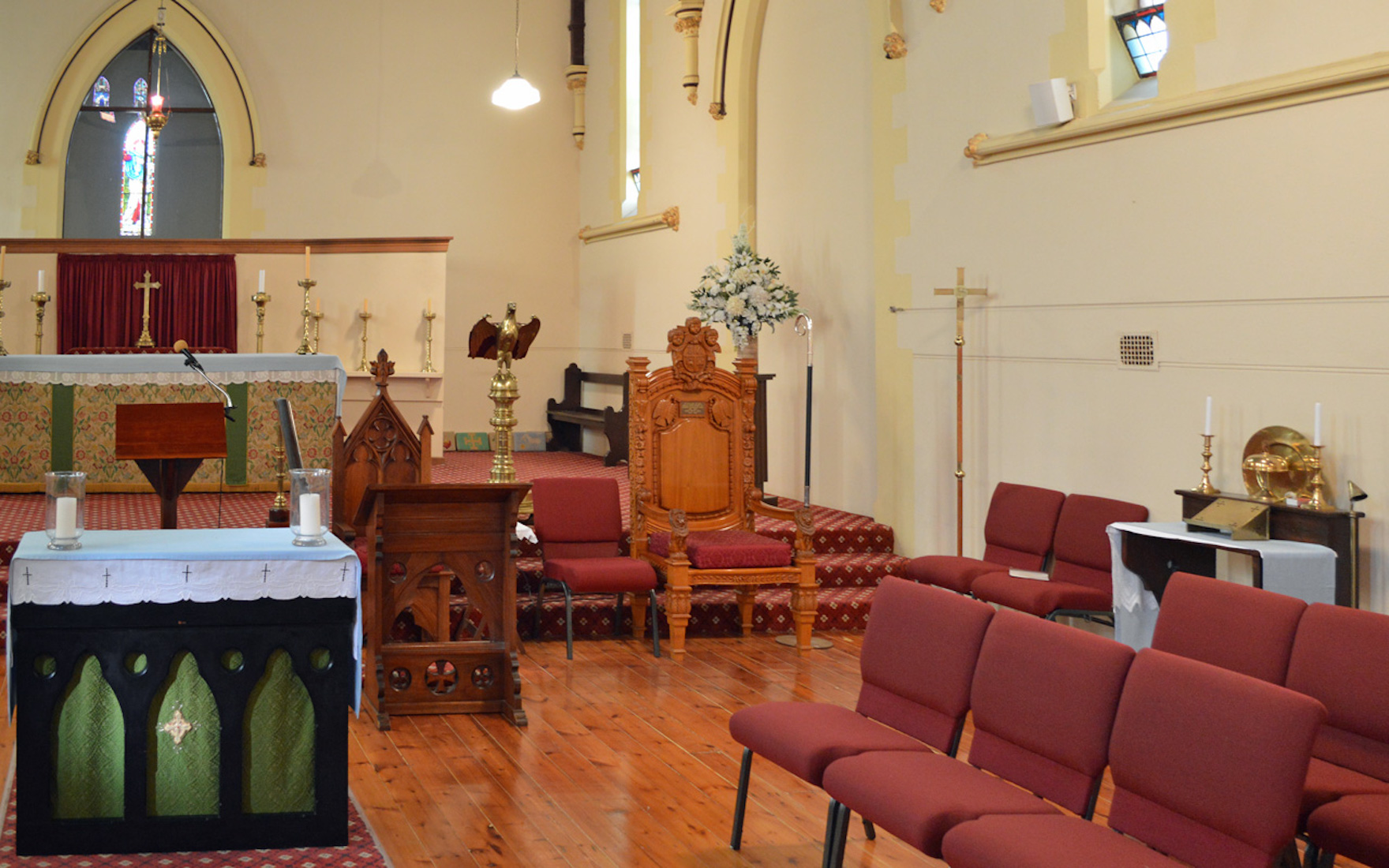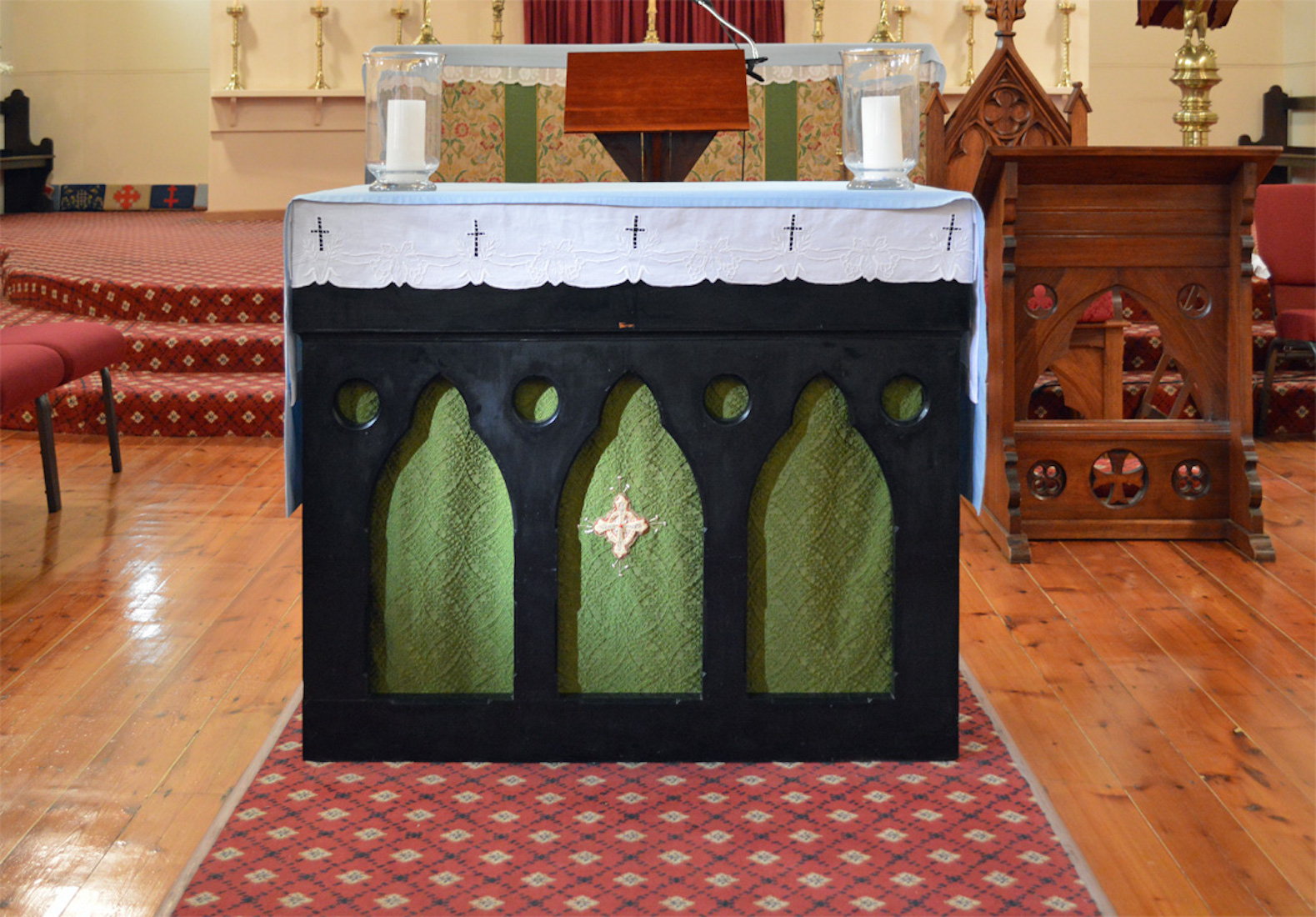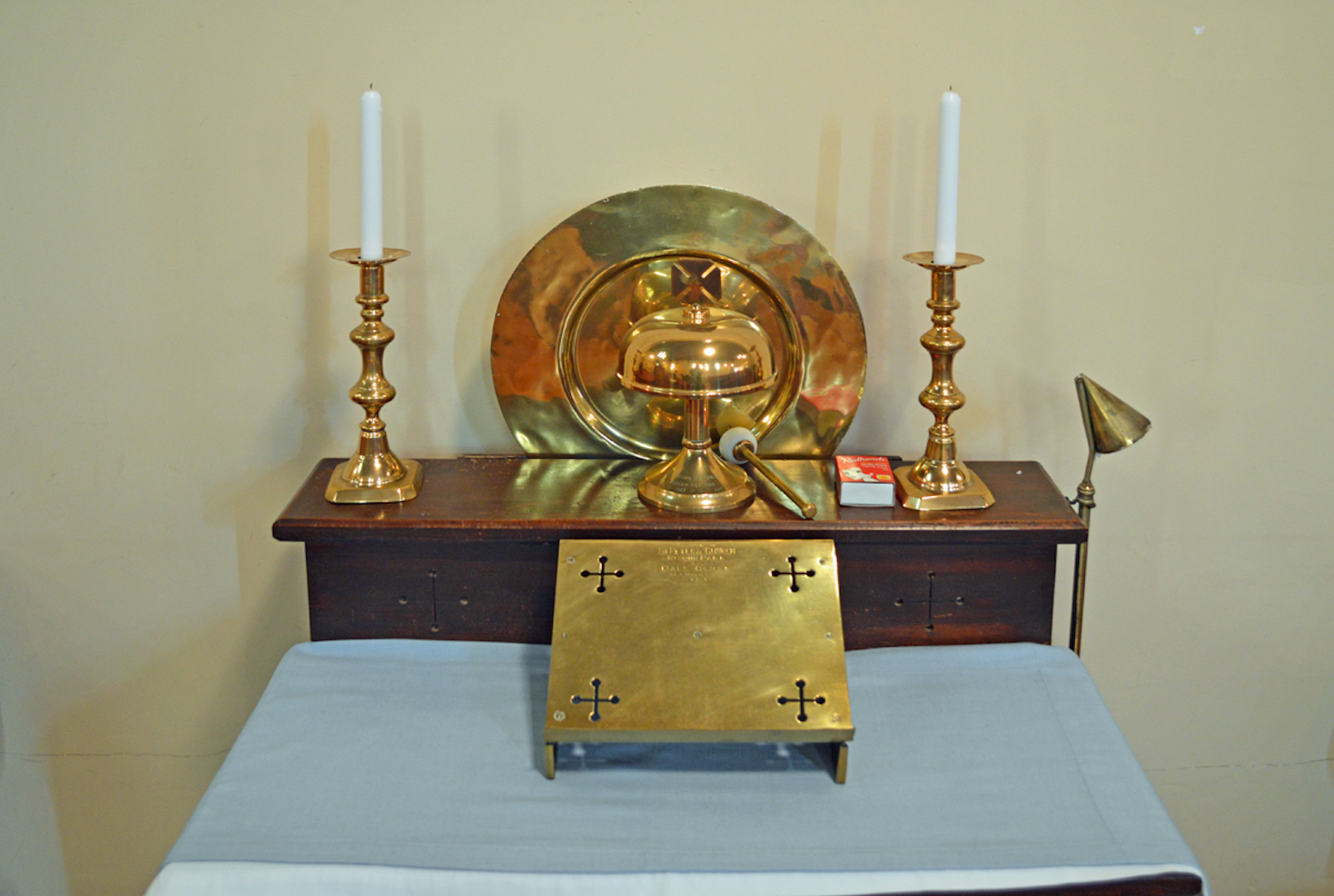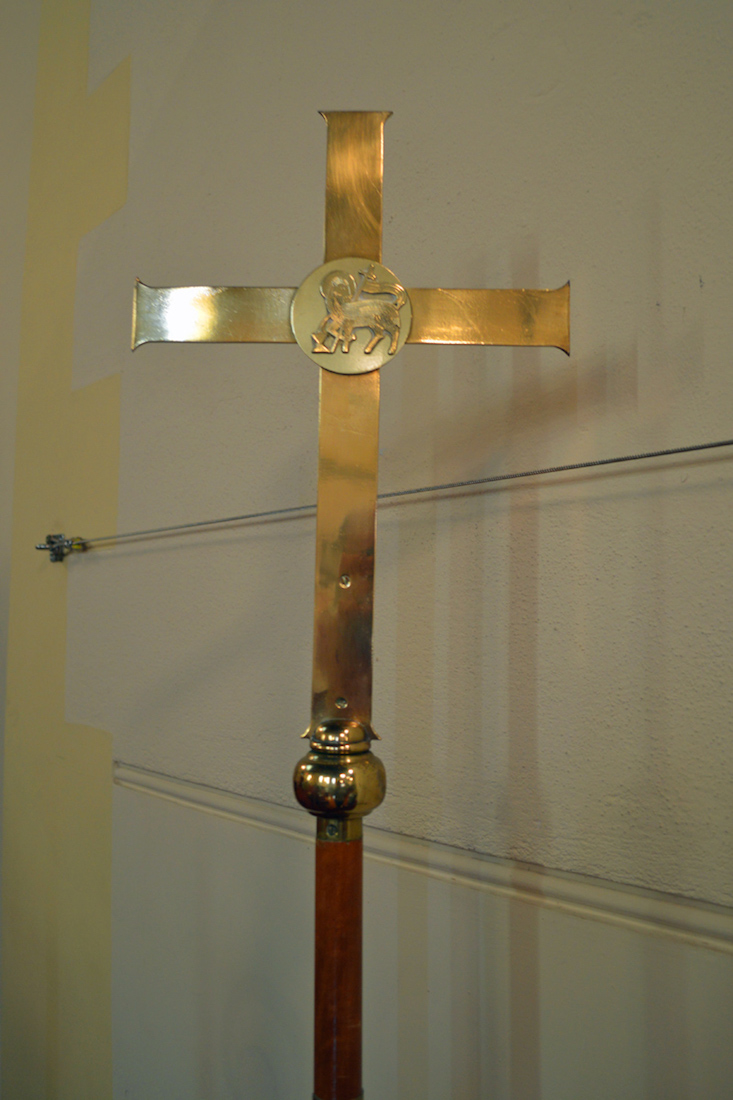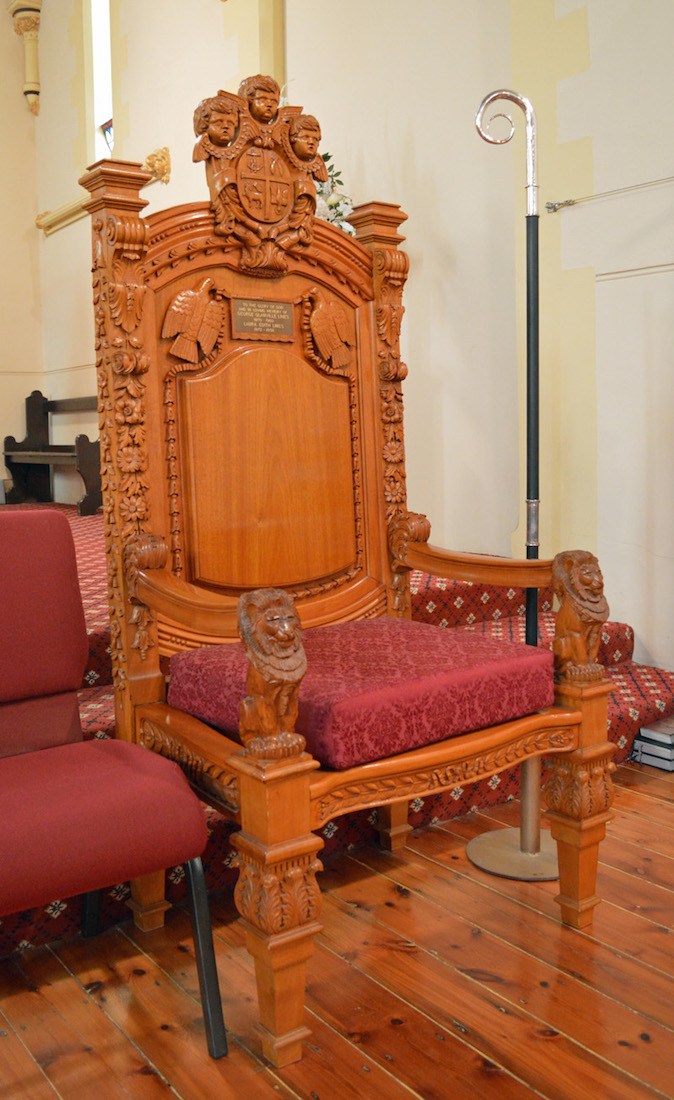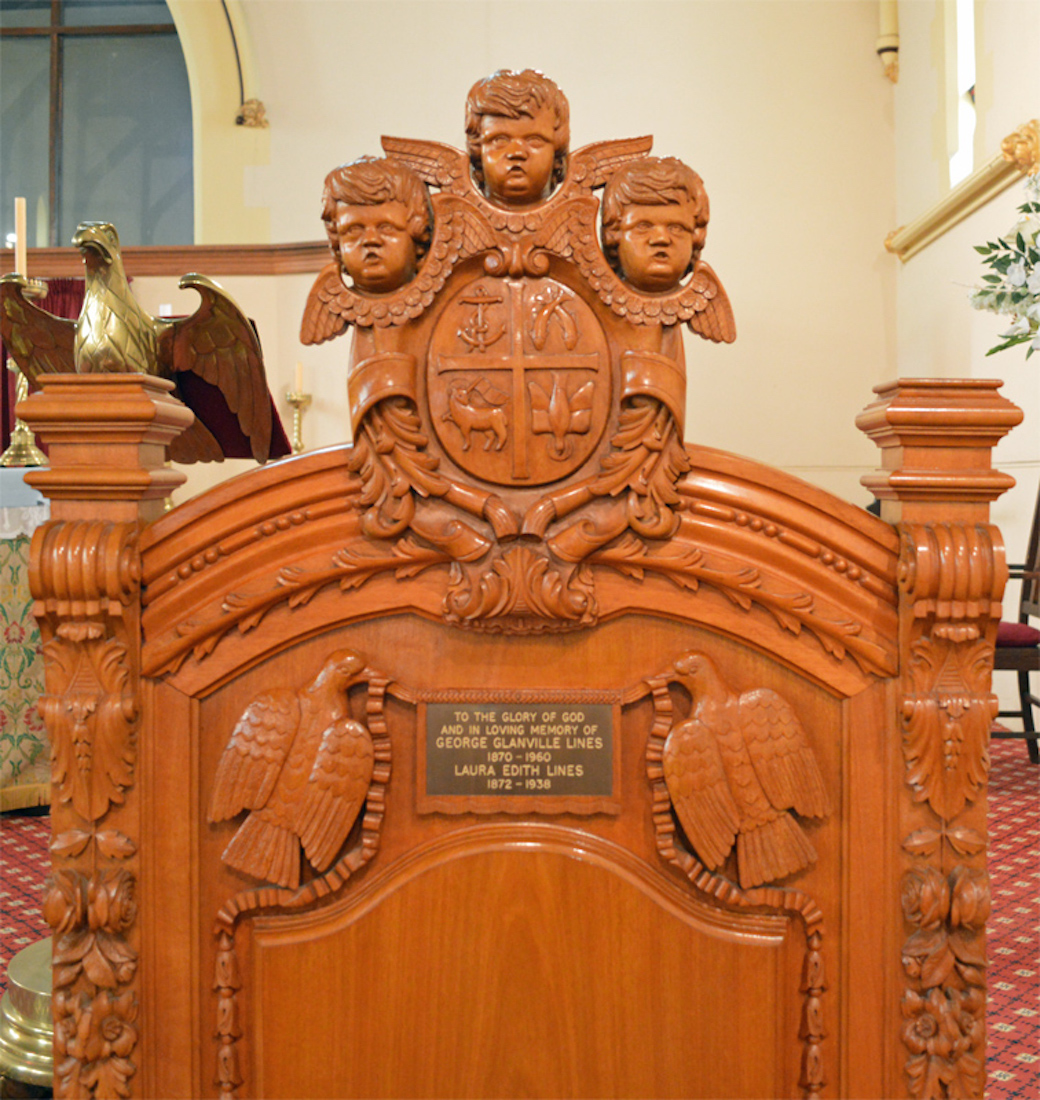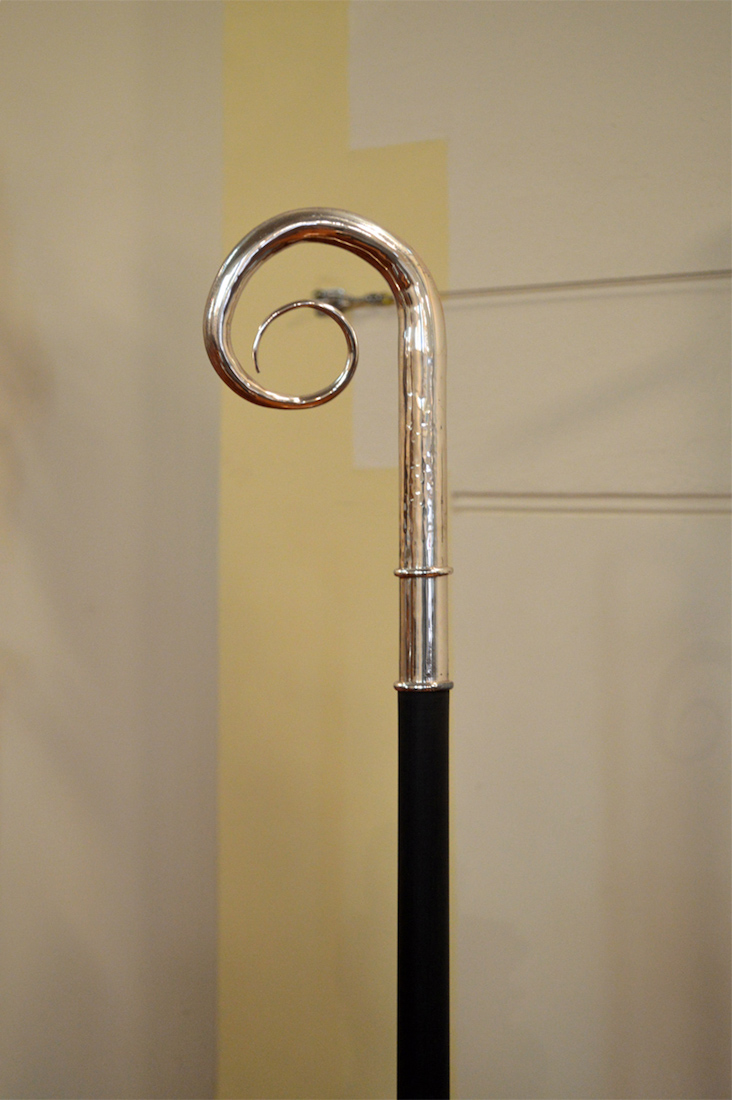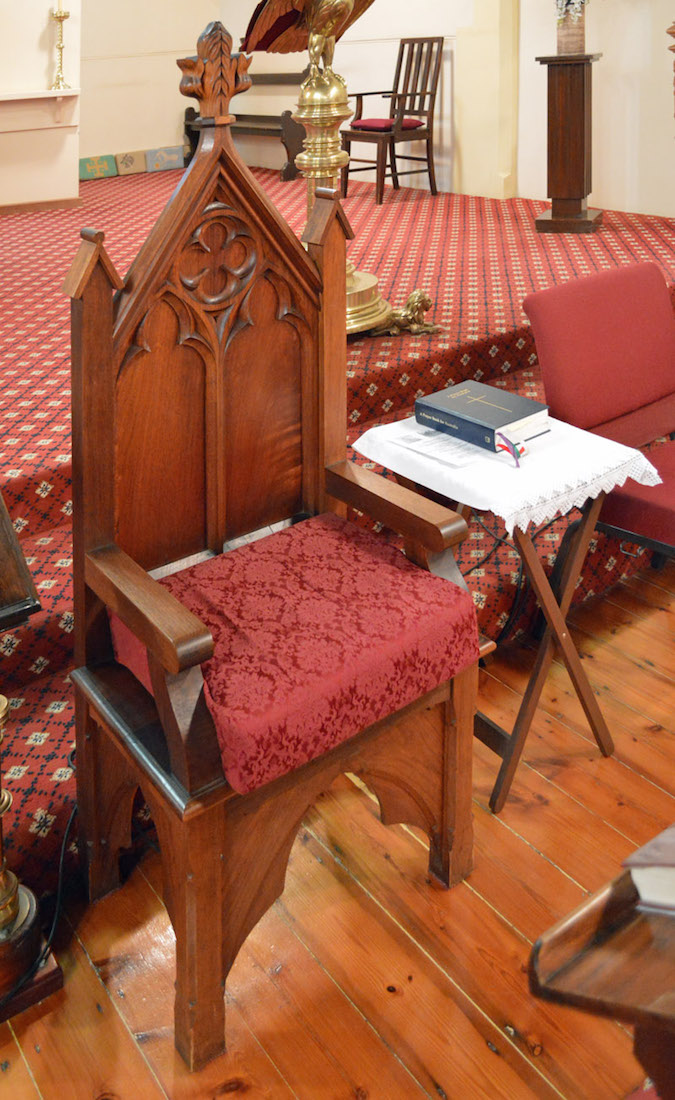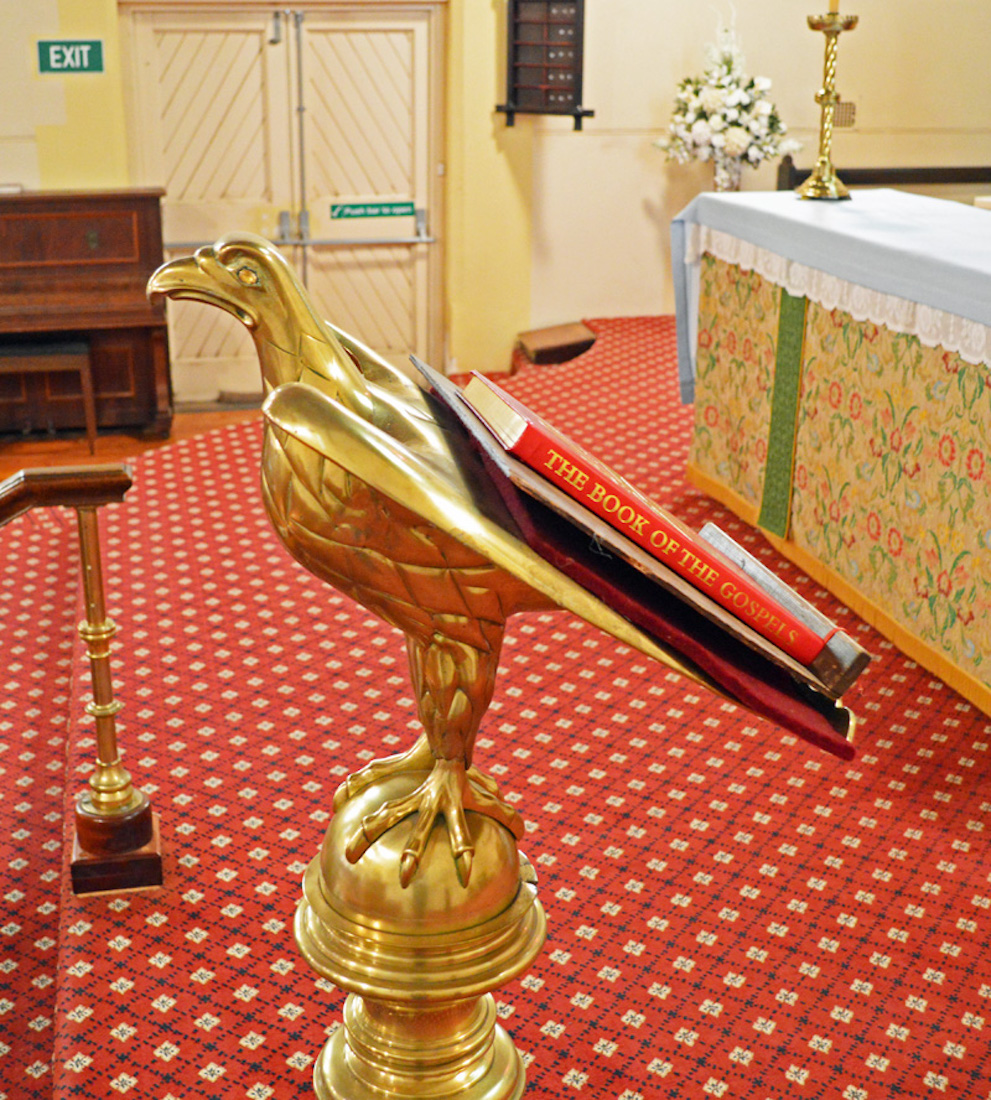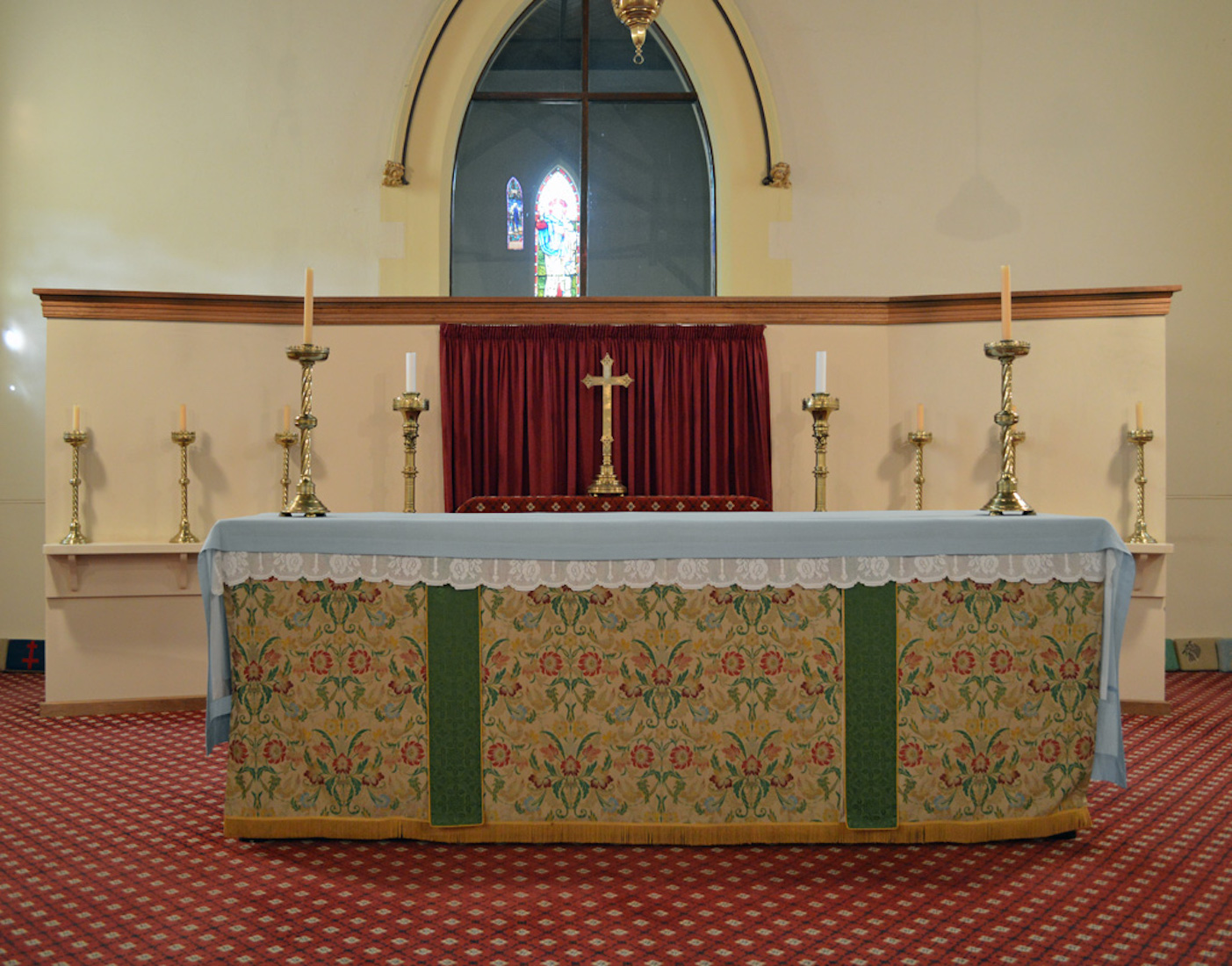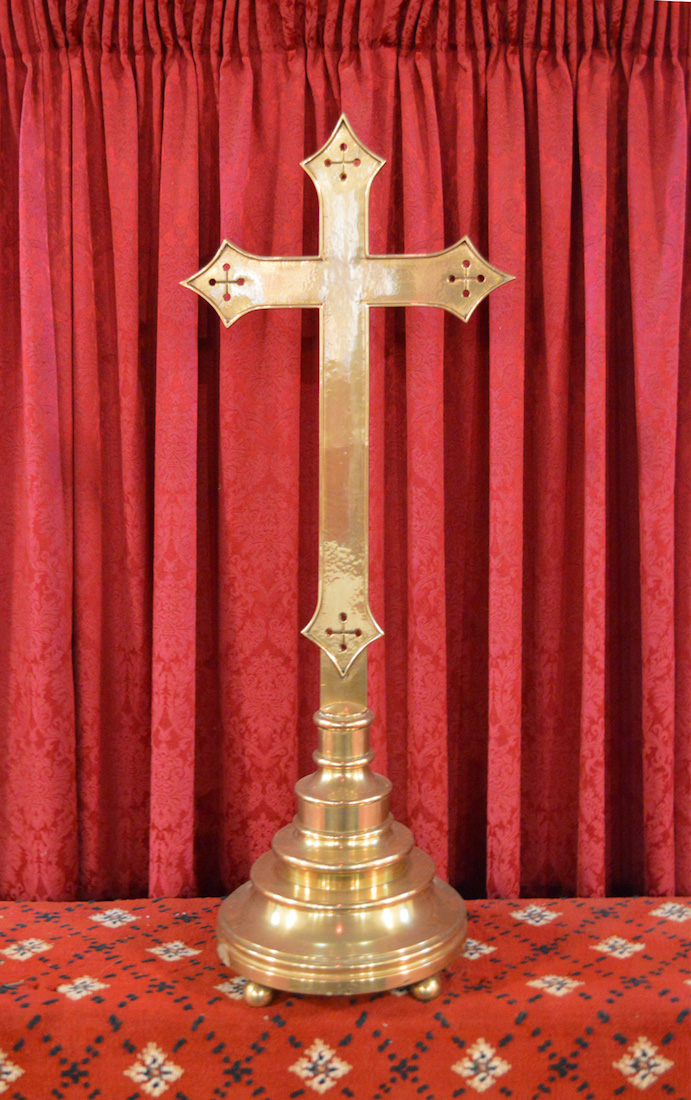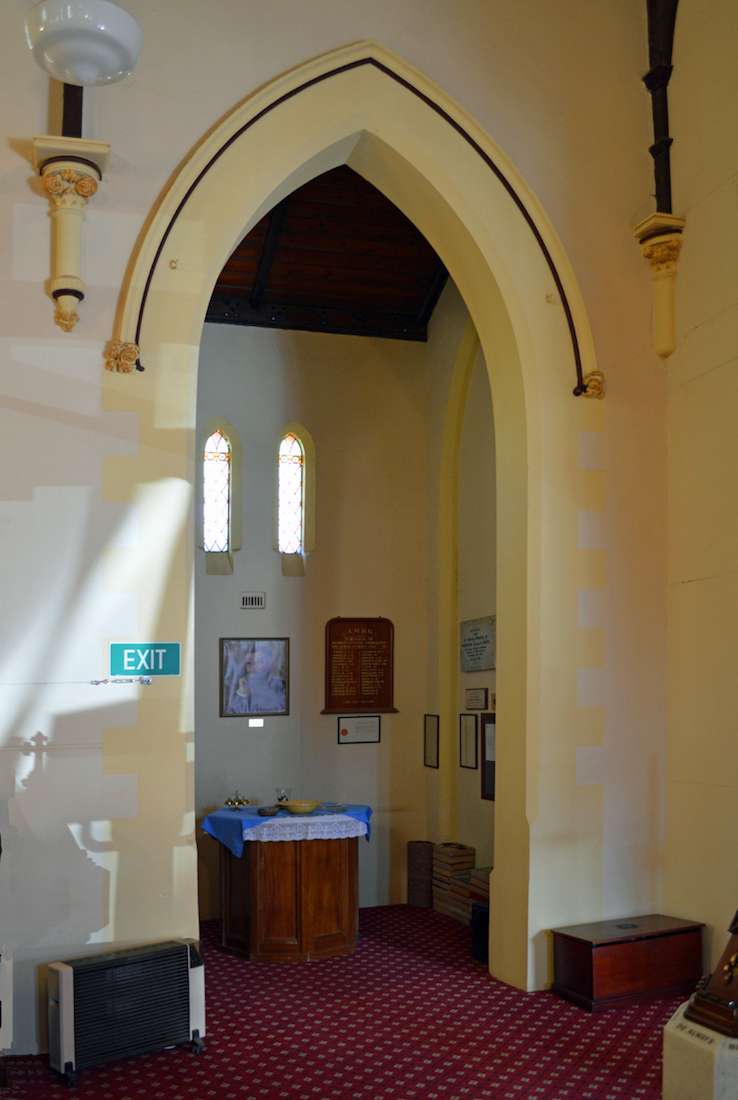
In the South West corner of the nave, a Gothic arched doorway leads through to the small Memorial Chapel, one of the two small chapels in this Cathedral. INDEX
22. ORNAMENTATION
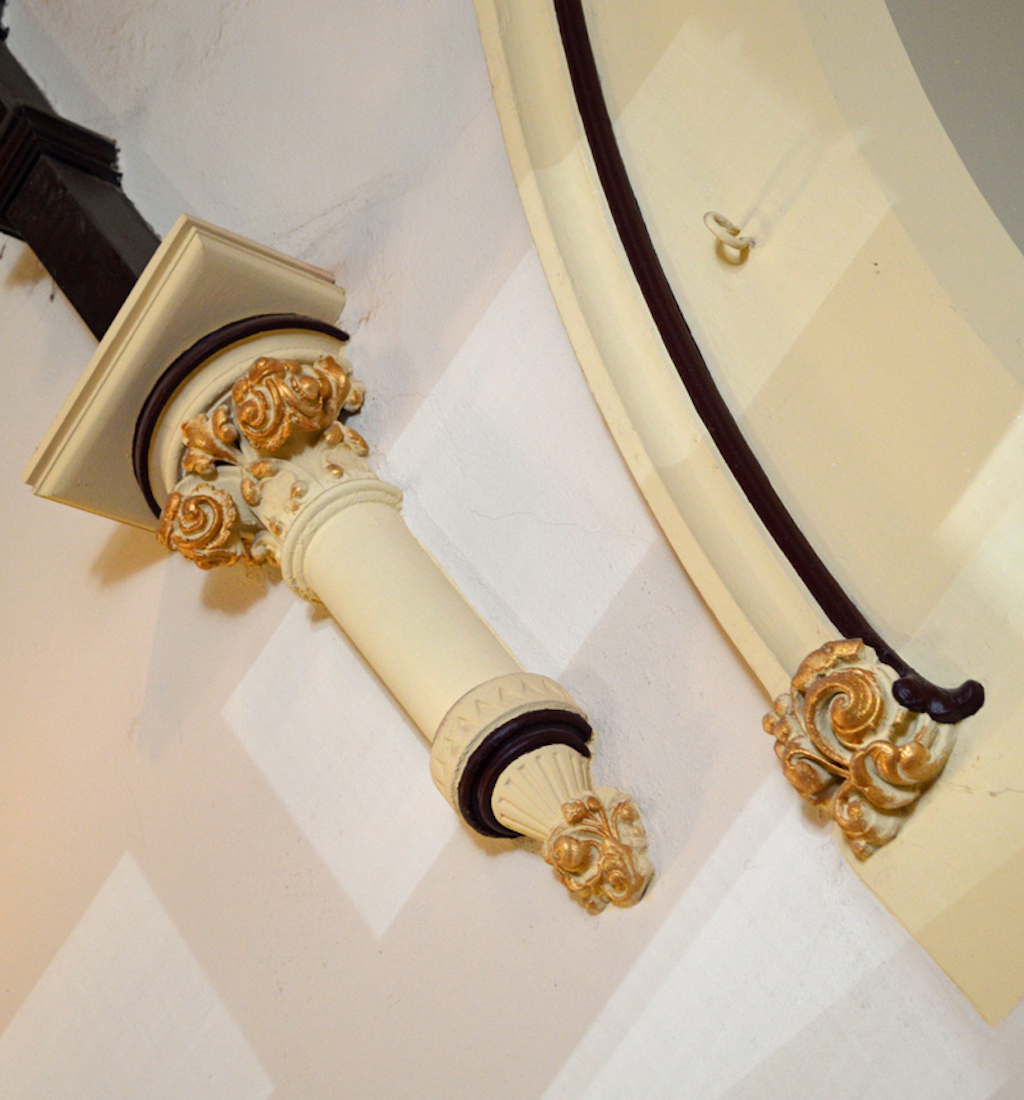
There is nice gold ornamentation above the doorway.
23. CHAPEL WEST WALL
The West wall of the Memorial Chapel displays a variety of plaques and certificates. The two large plaques at top commemorate the lives of a long time Church worker, and a sailor lost in WWI. Various other plaques commemorate the lives of other parishioners, including the man who played the organ of St Paul’s for 46 years. At bottom are several certificates relating to the Proclamation of the Cathedral Church of the Diocese of Willochra.
24. PRAYER POOL
Also in this chapel is a small altar with a candle and a basin of water with an encouragement to pray. Perhaps lighting the candle or placing a pebble in the water helps focus the prayer?
25. HONOUR ROLL
The East wall of the chapel contains more plaques, a portrait and an Honour Roll of those members of the congregation who gave their lives in war. Many churches and cathedrals have such Honour Rolls.
26. CHAPEL EAST WALL
The people remembered in the plaques include a past rector of the Church. The photograph depicts Gilbert White, who lived from 1884 to 1933, and who was the first Bishop of Willochra from 1915 – 1925.
27. CRUCIFIX
At the rear of the nave, close by the organ, stands a small table carrying the offertory bags, and a small silver crucifix. The crucifix is a principal symbol for many groups of Christians.
28. CRUCIFIX DETAIL
The crucifix is especially important in the Latin Church, but is also used in Eastern Orthodox and Eastern Catholic Churches, as well as in Anglican, Methodist, and Lutheran churches (though less often in other Protestant churches) and it emphasizes Jesus’ sacrifice — his death by crucifixion, which Christians believe brought about the redemption of mankind.
29. ORGAN
This small organ services the musical needs of this Cathedral. The small palm trees may be a reminder of Paradise, or a holiday wish of the organist!
30. SOUTH EAST SANCTUARY
This is a closer view of the South sanctuary. From the right, we see a small table which may be a credence table, a processional cross, the bishop’s staff and throne, the eagle lectern, the rector’s chair and desk, and at left the two altars. We now look at each of these in more detail.
31. NAVE ALTAR
Many churches have two altars: a nave altar which is used for the distribution of the Eucharist, and a main altar or high altar, closer to the East wall of the church which is reserved for more ceremonial occasions. In Roman Catholic churches, the front altar was introduced as the result of a Vatican decree, with the idea that the priest should be facing the congregation in the administration of the bread and wine. This altar came from Bishop’s House.
32. SIDE TABLE
Many Anglican churches have a ‘credence table’ set to one side of the sanctuary. This is to accommodate the elements of the Lord’s Supper before they are blest and administered. This may be the purpose of this little table. The brass reading stand is inscribed, ‘Presented to St Peter’s Church, Risdon Park, Dale Clare ... ’. Behind is a brass platten,candlesticks, and a sanctuary bell.
33. PROCESSIONAL CROSS
The ceremonial or processional cross is used during services when choir and clergy enter. The central image on this cross is of interest. It shows a lamb with a halo, representing the Lamb of God (Agnus Dei). The Lamb is carrying a banner based on the vexillim – a flag like object carried in the Roman army. The staff of the banner is a cross, and the banner when in colour, is often a red cross on a white background. The double triangle symbol at bottom left is unusual and unexplained.
34. CATHEDRA
This Bishop’s Throne or cathedra is a handsome piece of furniture. It is ornately carved with lions supporting the armrests, and an elaborate head rest of three cherubs and a crest. The chair was presented to the Diocese by the family of the late Lloyd George Lines of Burra who lovingly carved this magnificent chair.
35. CATHEDRA DETAIL
A cross divides the crest into four quadrants, each bearing a Christian symbol. These symbols are an anchor, two fish, the Lamb with banner, and a descending dove. A plaque beneath reads: ‘To the glory of God and in loving memory of George Glanville Lines 1870 – 1940, Laura Edith Lines 1872 – 1938.
36. PASTORAL STAFF
Next to the cathedra stands a simple crosier, or pastoral staff. In Western Christianity, the crosier is shaped like a shepherd's crook. A bishop bears this staff as ‘shepherd of the flock of God’, i.e., particularly the community under his canonical jurisdiction, but any bishop, whether or not assigned to a functional diocese, also uses a crosier when conferring sacraments and presiding at liturgies. This staff was a gift from a parishioner at the time of the Cathedral proclamation.
37. CHAIR
A nicely carved chair, rather less ornate than the bishop’s throne, is used by the dean during worship services. The chair and accompanying prayer desk was a gift from St Mark’s Church at Golden Grove. .
38. EAGLE LECTERN
Also in prominent position is the traditional brass eagle lectern. The lectern is the stand on which the Bible rests and from which the ‘lessons’ (readings from Scripture) are read during the service. The flying eagle is the symbol of John the Evangelist (Revelation 4: 7) who proclaimed Christ as 'the Word of God' at the beginning of his Gospel. The flying eagle is thus a suitable emblem from which God's word is read.
39. HIGH ALTAR
Near the East wall of the Cathedral stands the high altar. The word ‘altar’ reminds us of Old Testament sacrifice, but altars appear in Anglican churches as a reminder that Christ gave his life as a sacrifice for his people. This is the place where the Eucharist is consecrated, although these days the high altar is generally only used on special occasions, with the Eucharist more often being administered from the smaller altar closer to the congregation.
40. ALTAR CROSS
In this Cathedral a symbolic cross stands upon the main altar, and behind stands an array of candles in brass candlesticks. The cross reminds us of the centrality of Christ to our faith. Revelation 1:12, 13 depicts Christ standing in the midst of seven golden candlesticks.


